The transmitting station has nothing to do with radio communications; rather, it is here that thee data necessary to aim and fire the main armament, the two twin 4" mountings, was processed. Naval Gunnery is a very complex subject. Primarily, the moving ship was trying to hit a moving target. It was not simply a matter of leading the target. Information about the target, its range (distance from own ship), its bearing, its estimated speed and its estimated course were "fed" to the transmitting station from a variety of sources: the forward Mark 34 radar and gun director above the Bridge and the gun mounting itself. The Admiralty Fire Control Clock (AFCC), a primitive analogue mechanical computer, did the calculations necessary to provide the fire control solution. Once the fire control solution was known, the bearing and elevation was transmitted to the gun crew .
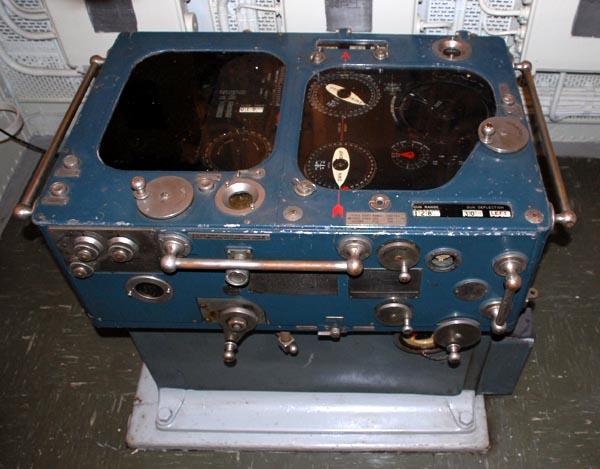 |
|
Nameplate data: Admiralty Fire Control Clock MK III
|
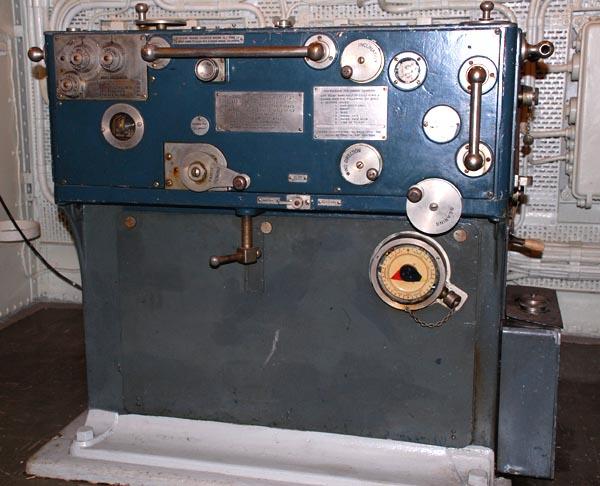 |
| Front view of the Admiralty Fire Control Clock whose design dates back to the mid 1930's. When the ship paid off, this device was rendered inoperative by the navy. It took a bit of work to get it back into some reasonable working order. (Photo by Jerry Proc) |
The Admiralty Fire Control Clock (AFFC) was a mechanical, analogue computer. Information such as wind velocity, enemy vessel's course and speed, air temperature etc. were manually entered into the unit. It was located in the Transmitting Station. Originally, a type 6W gun director supplied bearing, range and elevation data to the clock.In turn, the AFFC calculated the firing solution to the dials in the gun director and the gun mountings themselves. The director crew and gun's crew then trained and elevated the guns to the angle specified.
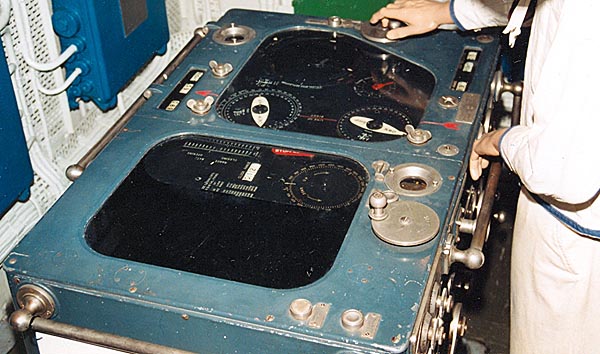 |
| The two white silhouettes of ships are marked "own ship" and "enemy ship". (Photo by Jerry Proc) |
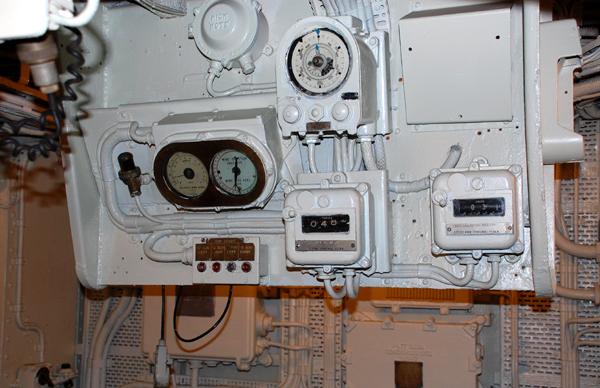 |
| This is the instrument panel above the AFCC. (Photo by Jerry
Proc)
Left side centre pair: Relative Wind Speed and Wind You Feel Top centre: Unknown Bottom Centre: Range Receiver Indicator Top right: missing Bottom Right: Gun Deflection Receiver |
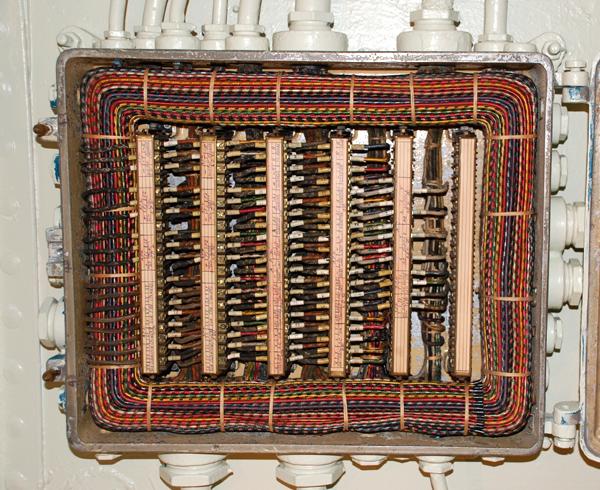 |
| The cover of this junction box in the Transmitting Station has been opened to reveal its internal wiring - an absolute work of art by the shipyard mates! (Photo by Jerry Proc) |
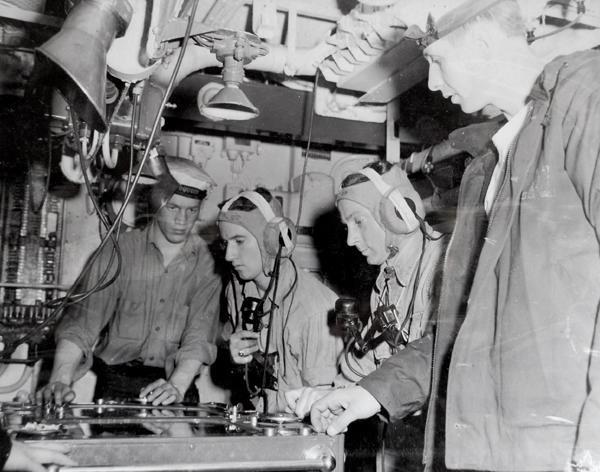 |
| The AFCC is being operated during Action stations. (Haida Archives photo) |
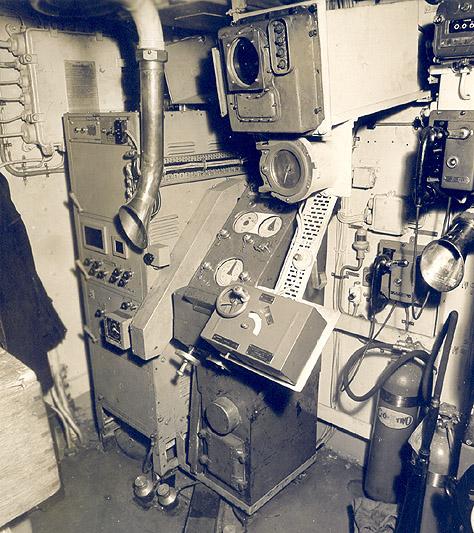 |
| This photo, taken in February 1946, shows the equipment fitted to the starboard bulkhead of the Transmitting Station. In evidence is the L-24 panel; bearing tube (over RTU) Range receiver from RTB (below bearing tube). This was just some of the equipment used to develop the fire control solution for the forward 4.7 guns. (RCN photo by John Roue) |
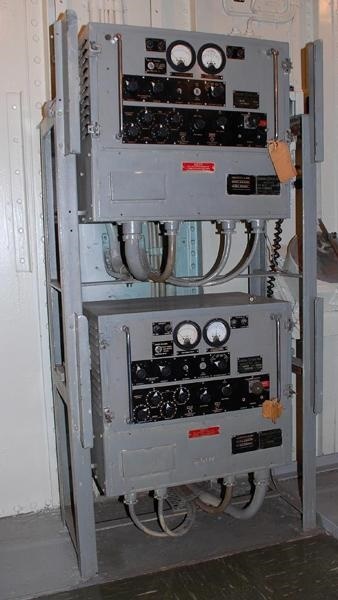 |
| Both 'A' and 'B' guns each had their own servo amplifier.The amplifier controlled the amount of electrical current applied to both the elevation and bearing motors in each gun. (Photo by Jerry Proc) |
WIND DUMARESQUE
Another variable necessary in the calculation of the firing solution was that of the wind direction and speed. The relative wind speed and direction were determined by the anemometer and wind vane located on the foremast yardarm, and was read from the indicators above the AFCC. The object to the right of the door in the Transmitting Station is known as the Dumaresque. Its purpose was to calculate the wind triangle to give the true wind direction. The intensity of the wind has a significant effect on the round's trajectory and the fire control solution.
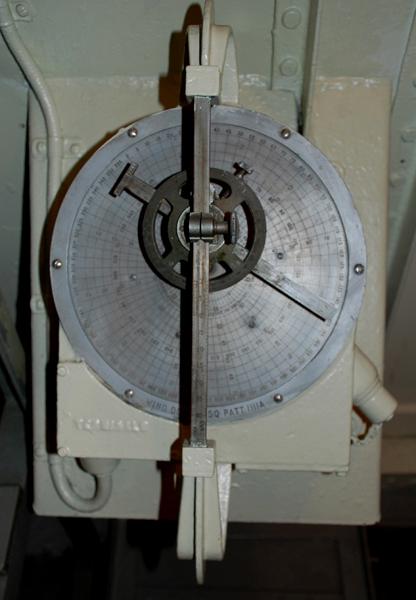 |
| Wind dumaresque. (Photo by Jerry Proc)
The Dumaresq is a mechanical calculating device invented around 1902 by Lieutenant John Dumaresq of the Royal Navy. It is an analogue computer that relates vital variables of the fire control problem to the movement of one's own ship and that of a target ship. It was often used with other devices, such as a Vickers range clock, to generate range and deflection data so the gun sights of the ship could be continuously set. A number of versions of the Dumaresq were produced of increasing complexity as development proceeded. |
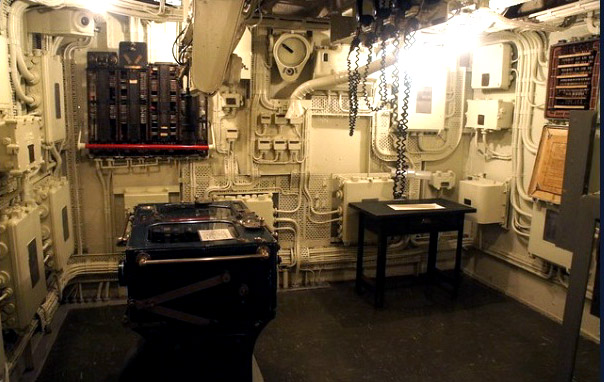 |
| In HAIDA's Transmitting Room, there is a lot of free space in the forward portion of this compartment. The desk does not belong, The deck plan extract from G07 ATHABASKAN offers an answer to the "why so much free space" question. (Photo by Mark Yearan) |
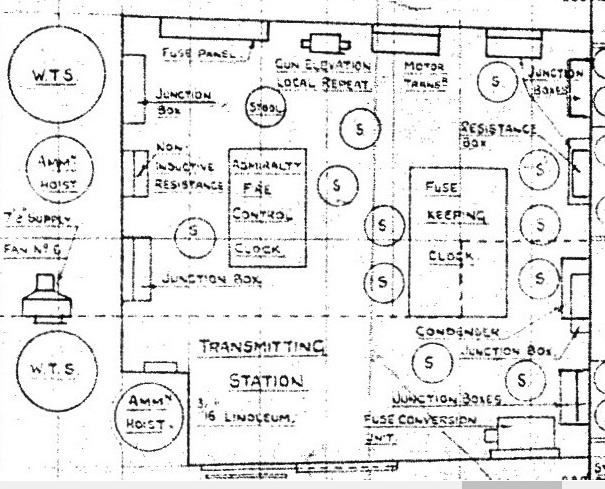 |
| The space was occupied by the Fuze Keeping Clock, part of the 285 Fire Control System which was removed during the ship's modernization between 1949 and 1952. |
Jul 13/23